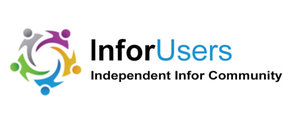The Problem: Managing a Learning and Training Environment for Fast Paced Telehealth
Provider organizations have been using eLearning environments for several years. In many cases, the organizations have not fully supported these environments or the education staff that supports and maintains these systems. COVID-19 will force healthcare organizations to focus their attention on expanding virtual and digital healthcare services. Telehealth will become a much more prominent and robust service offering driven by consumer demand. As the market moves to virtual healthcare, both the providers and the consumers will need to be trained on how to use and manage these environments to ensure optimum outcomes.
While most of the eLearning environments today are focused on revenue cycle management and electronic health records, new requirements for training staff on telehealth and advancing digital health technology environments is already upon us. I have a physician friend who has spent the last month training his 100 fellow clinic physicians on how to effectively use telehealth to manage their patients. In his case, the telehealth solution has an intuitive design that supports quick learning and adoption of the tool. How will this environment now be managed to ensure that providers can easily refresh their application usage knowledge and keep up with the vendor enhancements to the system?
Telehealth environments will also require content guidance for patients who are going to interact with the providers over this technology. Creating online guidance for patients is likely to require different skill sets and approaches from what has been developed for providers thus far.
The Solution: Adaptive eLearning Integrated into Healthcare Applications
Many eLearning solutions are standalone environments used in scheduled training environments. Screenshots of application environments are created to reflect a standard workflow for students to learn. In some cases, these environments can be accessed from screen icons within the applications. But these eLearning environments are static relative to the knowledge and experience of the user.
An emerging approach is to integrate eLearning with AI guidance into the application workflow that is aware of the user’s current application knowledge based on workflow selections[1]. A user can access and reinforce his or her application knowledge with real-time questioning at the exact workflow point where guidance is needed with a variety of content (e.g., text, audio, video, and infographics). Adaptive eLearning solutions can determine from each session what areas of application knowledge need to be refreshed and/or corrected for the user. Content management can be supported by monitoring the eLearning activities by type of user, roles, and modalities of care. This allows the eLearning content to be updated and maintained to drive optimum knowledge and usage of the application environment.
Adaptive eLearning will be highly beneficial for telehealth environments where the providers’ desire for application mastery will drive the need for focused and continuous learning updates. The need to provide patients with information for easily participating in the telehealth environments will also be a key factor in driving patient satisfaction with these services.
The Justification: Enabling Rapid and Effective Adoption of Provider and Consumer Telehealth
COVID-19 has driven providers to pursue telehealth to conduct virtual patient examinations to protect the health of both parties and to protect primary care revenue streams. Due to this necessity, CMS has allowed less stringent telehealth billing as well as the reduction of interstate provider practice regulations. I don’t believe that consumers or providers will allow a rollback of these lessened regulations. Therefore, provider organizations will need to embrace and extend telehealth services that are supported by effective adaptive eLearning environments for physicians and patients. Effective eLearning programs will improve both provider and patient satisfaction for growing telehealth services.
The Players: Pushing eLearning to New Heights
Representative vendors who are pushing adaptive eLearning solutions to provide specialized content based on user roles that support provider specialties or modalities of care are:
These vendors have a lower risk factor since they have successfully implemented their solutions in healthcare organizations. These solutions are well positioned to support dynamic environments such as telehealth.
Success Factors
- Evaluate adaptive eLearning platforms that can be quickly implemented to support telehealth services to create an effective prototype for evaluating the solution.
- Assign experienced eLearning personnel to implement and manage the adaptive eLearning solution to advance their skills and experience for effectively supporting and extending the solution.
- Create a strategy for replacing the current legacy eLearning program(s) with the selected adaptive eLearning solution.
Summary
eLearning environments have been adopted by most healthcare organizations to support their education and training programs. The legacy eLearning solutions are static in nature and may or may not be integrated with healthcare application workflows. Even when integrated into application workflows, these environments are likely not designed to render guidance based on the user’s role with the application. Adaptive eLearning solutions are available to enable higher levels of user application support based on roles and to provide insights as to where users may need additional training or education for mastering the application.
Telehealth represents an environment that demands adaptive eLearning capabilities. Telehealth usage for healthcare organizations will expand dramatically and across several modalities of care. The emergence of integrating patient monitoring devices into these environments represents the dynamic nature of these solutions as they mature. Implementing adaptive eLearning solutions to support telehealth provides the opportunity for organizations to become proficient with this education solution. Once proficiency has been achieved, organizations can assess replacement of the legacy eLearning systems. As Leo Buscaglia said, “change is the end result of all true learning.”
[1] https://learningsolutionsmag.com/articles/using-ai-in-elearning-foundational-concepts
Photo Credit: Adobe Stock, Andrey Popov


